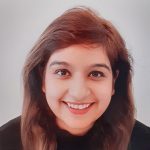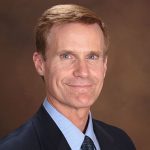Regenerative medicine focuses on harnessing the body’s ability to heal itself by restoring the functionality of damaged tissues and organs. Current medicine treats symptoms but oftentimes does not repair the underlying problems, which is the goal of regenerative medicine. North America and Europe are the largest markets for regenerative medicine, but Asia is beginning to become a more significant player. Asia’s current regenerative medicine market size is $600 million, with an average annual growth rate of about 20%. The demand for better healthcare in Asia is on the rise due to the rapidly growing health sector, increased prevalence of chronic diseases and an aging population. Recent developments in tissue engineering and stem cell therapy are further fueling the growth in this field.
Going forward, the Asia-Pacific region is predicted to be the fastest growing region for regenerative medicine. Many governments in the region are also drafting policies to advocate the establishment of centers of excellence and are building new infrastructure (and research networks) to push towards a profitable commercialization of regenerative medicine products. The fast-growing regenerative medicine markets in India, Japan, China and Korea are paving the way for further market growth in the region. China and Japan are major stakeholders in the regenerative medicines market, jointly accounting for almost two-thirds of the Asia-Pacific market.
China
China has recently experienced a dramatic increase in accidents, injuries and diseases attributed to aging. Therefore, China’s government has been supporting the development of regenerative medicine by advocating regenerative medicine policies and providing funding. China has contributed considerable research findings to date. Also, since 1999, the Ministry of Science and Technology (MST), the Ministry of Health, and the State of Food and Drug Agency have issued about 30 new rules and regulations to increase the development of regenerative medicine. In 2011, China established the First National Stem Cell Research Guidance and Coordination Committee in order to design and plan stem cell research. In 2015, China allowed more stem cell research bases to be set up to allow further development in the field. More than 30 regenerative medicine centers have been built in China.
Chinese researchers have made great advances in the field due to substantial funding from central agencies and local governments. The MST, Chinese Academy of Sciences (CAS) and the National Natural Science Foundation (NNSF) have invested about $450 million into the regenerative medicine field. Furthermore, in order to reverse and prevent “brain drain,” or the emigration of highly trained professionals, Beijing has been offering Chinese scientists competitive salaries to encourage those who were trained at top universities in the United States or Europe to return to the country. China’s greying population will put a great strain on the Chinese economy. Developing more regenerative medicine products, which will help chronically ill patients, could decrease this strain. The number of projects and amount of funding in regenerative medicine are both increasing annually, and we will likely see many more developments in the field in China.
Japan
Prior to 2014, the approval process for regenerative products included a long time period between conducting clinical studies and actually getting the product on the market. In 2014 Japan issued new regulations to accelerate the approval process of regenerative medicine products. The new legislation came from two laws—the Pharmaceutical and Medical Device (PMD) Act and the Safety of Regenerative Medicine Act.
Under the new Japanese regulations, manufacturers can now undergo a shorter clinical trial period before receiving conditional marketing approval, which allows them to market their product. There is an increased emphasis on post-marketing safety measures, including prior informed consent of potential risks to patients. The results of these studies will determine if the manufacturer’s product will receive full marketing authorization.
These regulatory changes accelerate the process and allow products to get on the market faster so that patients can receive treatment and companies can generate revenue. Japan’s need for regenerative medicine is now higher than ever, since Japan’s population is aging more quickly than any country in the world. The new Japanese regulations allow companies to get their product on the market several years earlier than they would have been able to before the regulatory changes.
Many Western companies already have ventures in Japan underway because of Japan’s emphasis on regenerative medicine and the faster marketing process. Some company examples include Athersys, Pluristem, Mesoblast and RepliCel.
Mesoblast, an Australia-based company that develops innovative cellular medicines, announced that they plan to apply for early approval under Japan’s new streamlined clinical trial regimen for their chronic heart failure treatment. They hope to use the results of Phase II trials in the United States with a Japanese bridging study in order to gain conditional approval to market their product in Japan. Mesoblast is looking to do the same with their back pain product. If everything goes according to plan, Japan’s new regulations will put Mesoblast years ahead of potential competitors.
RepliCel, a Canadian regenerative medicine company, is bringing its RCH-01 product used to treat androgenetic alopecia to Japan. Japanese regulatory authorities recently approved a clinical research study that launched last year. Shiseido Company is financing the study, and it also has an exclusive marketing license for the product in certain Asian countries.
Athersys, a U.S. biotechnology company, entered a partnership and license agreement with Japan’s Healios K.K. to develop MultiStem, a product used to treat ischemic stroke patients. Under their agreement, Healios has exclusive rights to develop MultiStem in Japan and will be responsible for commercializing the product in Japan. Athersys will retain all rights outside of Japan and will be responsible for providing the manufactured product and support to Healios.
Pluristem, a clinical-stage biotherapy in Israel, is working with Sosei, an international biopharmaceutical company that originated in Japan, to establish a Japanese company in order to clinically develop and commercialize Pluristem’s placental-derived adherent stromal cell (PLX-PAD) therapy in Japan. Their initial focus is to use the product to treat critical limb ischemia. Japan’s Pharmaceuticals and Medical Devices Agency (PMDA) already agreed on a 75-patient study with PLX-PAD under the accelerated regulatory pathway for regenerative medicine.
It is estimated that globally, regenerative medicine will become a $10 billion industry by 2030. Asia is gaining more prominence in the field, and developments in regenerative medicine will change how Asian countries manage the health of their aging populations. Technology has played an integral role in the success of regenerative medicines, and recent technological advances as well as the Asian population’s needs promise further growth in the field. Western regenerative companies looking to sell their products overseas should not ignore Asia.





